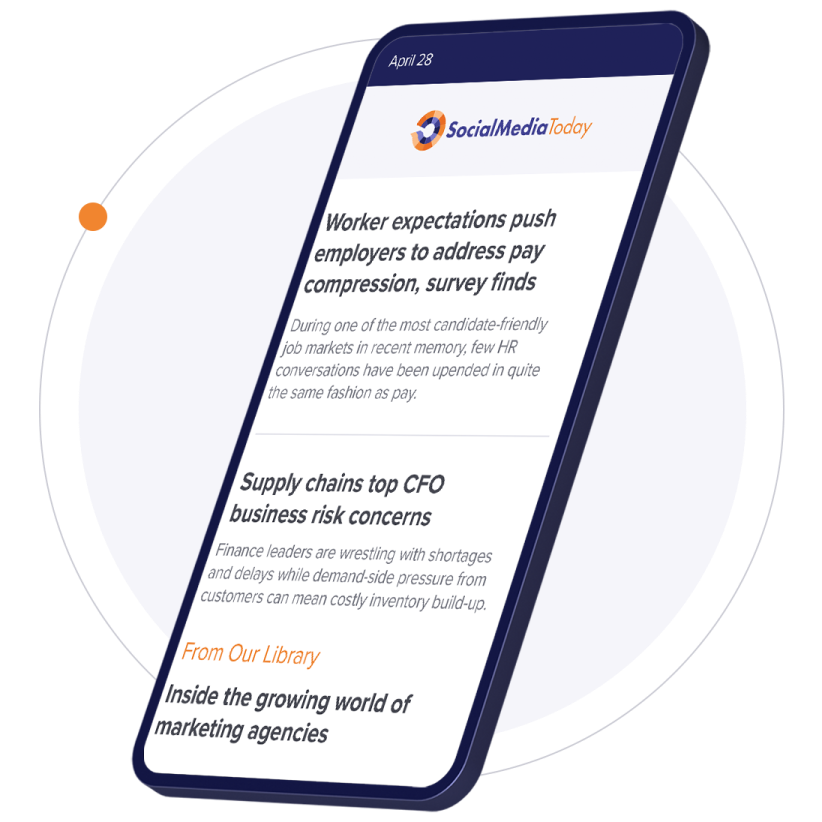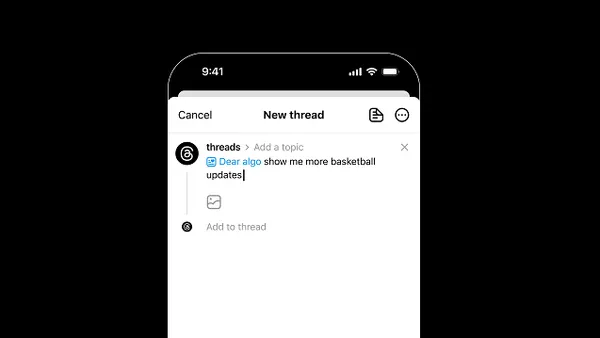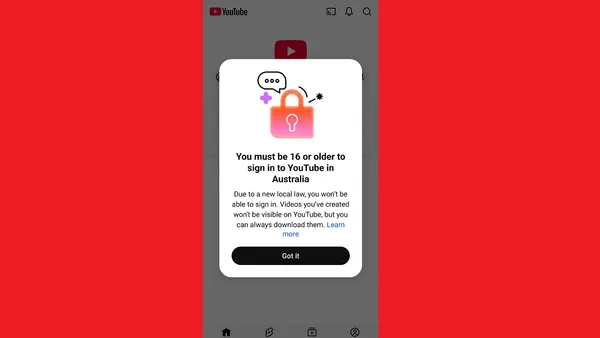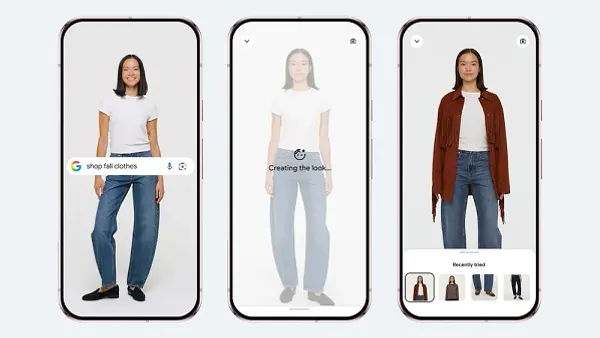Amid various debates about the dangers of internet access for teens, and controls that can be implemented to protect young users, Google has published a new report which looks at how European teenagers are using the latest technology, and the relative risks and educational opportunities based on the same.
Google’s new “Future Report,” created in partnership with youth consultancy Livity, incorporates survey insights from more than 7,000 teens aged 13-18 across Ireland, Poland, Greece, Spain, Italy, France, and Sweden.
The full 77-page report covers off on a range of key areas of concern, including digital education, reliance on social media and digital platforms, increasing AI use and more.
And there’s a lot of helpful insight, for parents and marketers, contained within.
First off, the report looks at how teens view the benefits of online connectivity, and what they’re doing online.
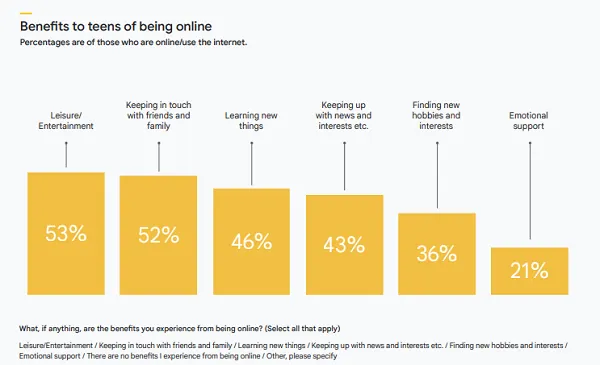
As you can see in this chart, leisure/entertainment is the primary reason why teens use the internet, while keeping up with friends and learning about their interests come in close behind.
Which is no real surprise, though it is worthy of note how exactly teens are finding new things on the web:
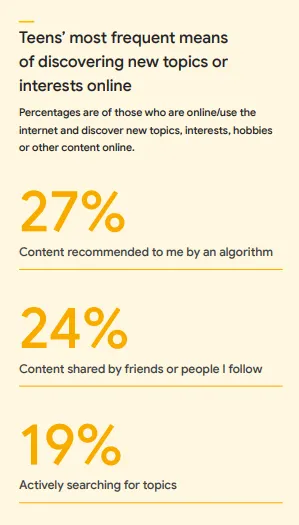
Algorithmic amplification plays a key role in showing users things that they might be interested in, which underlines the power that social platforms have in guiding teen thinking, and swaying interests based on algorithmic weighting.
That may or may not be a big concern, depending on who’s in charge of those algorithms, and how much trust you’re willing to put in them. But it is an interesting consideration. China, for example, implements more stringent controls over algorithmic amplification in local social media apps aimed at teens in order to avoid anti-social or harmful trends gaining traction.
The insight here would suggest that this could have a significant impact on broader behaviors.
The report also looks at the role that video content, in particular, plays in modern teen life:
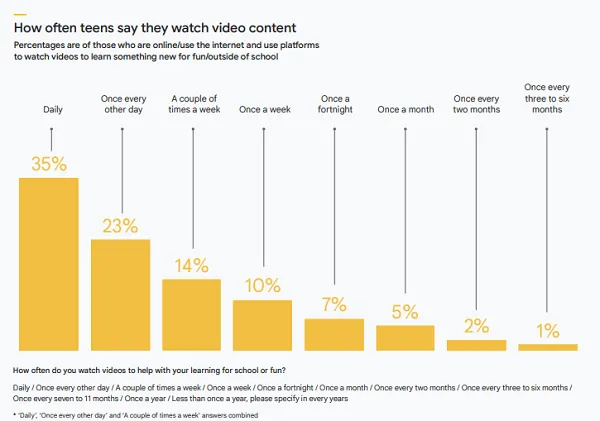
Safe to say that video is also a significant influence on EU teen culture, with YouTube being a key driver of broader teen engagement and trends.
The report also looks at the adoption of AI, and how teens view the latest AI tools.
And teens are most definitely adopting AI chatbots and apps:
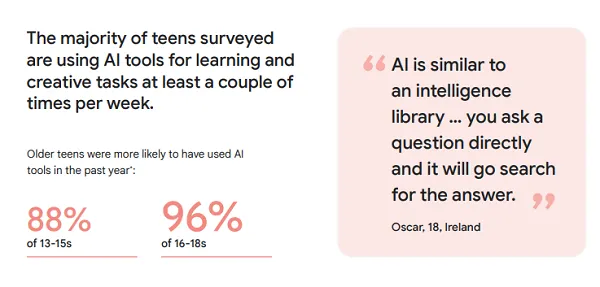
Most teens are now aware of AI tools, and are incorporating them into their daily activities, with the most common usage of AI being to do school work:
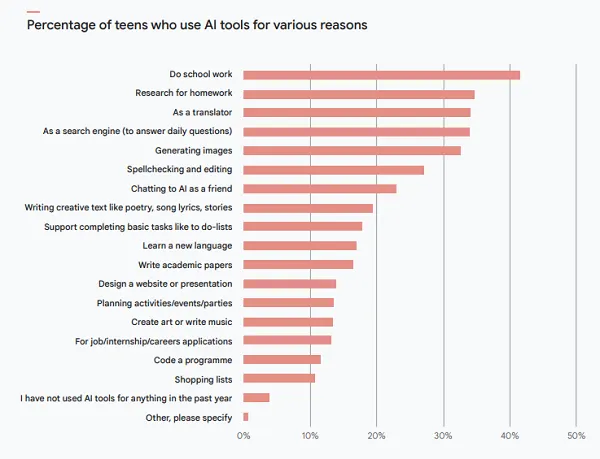
Many teens also say that AI tools help them improve their creativity, and it’s interesting to consider the broader impact of this shift, and how teens growing up from now on won’t know a world where AI assistance tools never existed.
That’s going to change the paradigm for education more broadly, and put more emphasis on the use of AI tools for training, in more and more contexts. Which raises questions about reliability, and within this, teens are also learning how to verify information presented to them online and in AI tools.
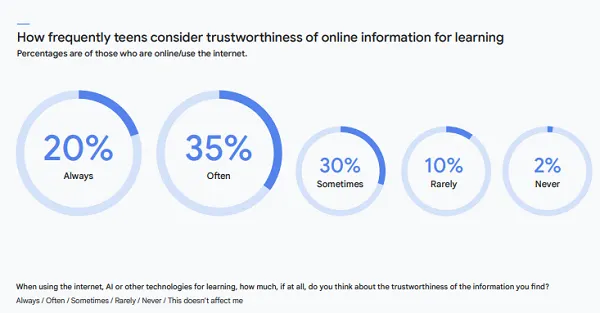
Digital literacy is becoming an even bigger consideration in this respect, because AI tools, in most cases, only summarize what’s already available on the web, and without some level of critical analysis, that can often lead to incorrect and/or misleading results.
The way to resolve this is to ensure that you don’t rely on AI answers in isolation, and that you use them as a guide, which is an important lesson that all web users need to factor in.
Which is another element of the report:
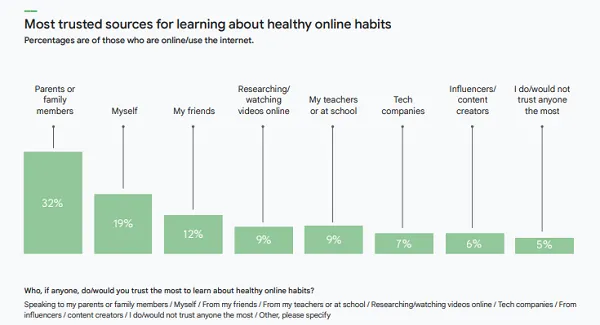
This is a key point, kids are turning to parents to help guide them on trustworthy information, and as such, parents also need to ensure that they can answer these questions.
Which many likely can’t, and it’s worth also noting that older teens stop relying on parents as much in this respect.
“At ages 13-15, more than half of teens (54%) turn to trusted parents or guardians to learn healthy online habits. But at ages 16-18, that number drops to less than one in five (19%), suggesting that the best time for young people to learn good online hygiene is when they’re still more open to conversations with the adults in their lives.”
So for one, kids need more digital literacy education at a young age, from trusted, informed sources. But also, parents need to be wary that older teens are going to tune them out, and at a crucial time for potential exposure and harm, they’re no longer looking for this advice, from them at least.
In a time of rapid technological change, this is another element of concern.
So what are the key outcomes based on all of this?
Well, the main lesson is that governments need to put more focus on digital literacy education, from the impacts of algorithms, to the flaws of AI-generated answers, to adequate safety habits within online interactions.
Many regions are also looking to increase the age of social media access, in order to limit potential harms, but the insight here shows that AI and video access (via YouTube) is just as significant a concern, while the social benefits of online connection could also be significantly impacted by any such increase.
Education, particularly among younger teens, is the key step. And while a level of protection through enhanced age checking will also help, the future is already here in terms of how youngsters are using digital tools to learn about the world.
Governments should also be pushing to understand more about algorithmic amplification among teens, and what safeguards can be implemented at this level, while schools should also be investing in digital education for parents to better reach young users.
You can check out the full EU “Future Report” here.

